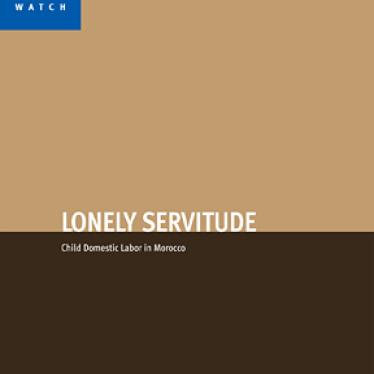(Cairo) - Libyan government forces placed more than 150 antipersonnel landmines in at least one location in the Nafusa Mountains, Human Rights Watch said today. Human Rights Watch visited the site, inspected mines that had been removed, and interviewed the rebel fighters who removed them.
"These antipersonnel landmines pose a huge threat to civilians," said Steve Goose, arms director at Human Rights Watch. "More than 150 countries have banned landmines, but Libya continues to defy this global trend."
Human Rights Watch has confirmed government use of five types of landmines in six separate locations in Libya, including the use of antipersonnel and antivehicle landmines near Ajdabiya.
This is the first confirmed use of landmines in the Nafusa Mountains, in the far western part of Libya.
The mines found in the mountains are a Brazilian-made antipersonnel mine, the T-AB-1. The mines were placed about 10 miles north of the town of Zintan in a place called Khusha (coordinates N 32º 02.448', E 012º 12.710'), apparently to defend government positions further north.
The T-AB-1 plastic antipersonnel mine has a low metal content and is therefore difficult to detect once placed, Human Rights Watch said. In addition to its antipersonnel properties, the T-AB-1 can be used as a fuze for an antivehicle mine with the same name.
When Libyan government forces placed the antipersonnel landmines remains unclear. Armed opposition forces in the Nafusa Mountains said that rebel fighters discovered the mines on or around June 1, 2011, and removed 169 of them. Human Rights Watch inspected the disassembled mines in Zintan.
The de facto opposition authority in Libya, the National Transitional Council, formally pledged on April 28 not to use antipersonnel and antivehicle landmines, and to destroy all landmines in its possession.
"We hope the rebels will respect their promise not to use landmines and will destroy all mines in their possession," Goose said.
Government forces have placed T-AB-1 antipersonnel landmines in other areas during the conflict. In May, researchers from Amnesty International documented the use of the mine at two places in the Tammina neighborhood of Misrata, a residential area southeast of the city's center.
Libya is one of 37 nations that have not joined the 1997 Mine Ban Treaty. A total of 156 nations are parties to the treaty, and another two have signed but not yet ratified.
Brazil signed the Mine Ban Treaty on 3 December 1997 and became a State Party on 1 October 1999. Brazil ceased production and export of antipersonnel landmines in 1989. It has never used antipersonnel mines.
The Mine Ban Treaty comprehensively bans the use, production, and transfer of all antipersonnel mines, requires destruction of stockpiles within four years and clearance of mined areas within 10 years, and calls for assistance to landmine victims. In recent years, the only government forces that have continued to lay antipersonnel mines are Burma's.
"The use of antipersonnel mines in the Libya conflict is endangering civilians and will continue to do so after the fighting has stopped," Goose said.






